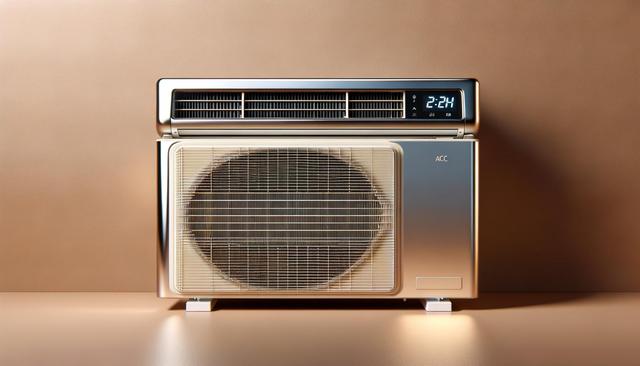What Is a Ductless Air Conditioning System?
Ductless air conditioning, also known as a mini-split system, is a type of cooling solution that does not require traditional ductwork to distribute air. Unlike central air conditioning systems that rely on a network of ducts to move cooled air throughout a building, ductless AC units deliver air directly into individual rooms or zones. These systems consist of two main components: an outdoor condenser and one or more indoor air-handling units. These are connected by a small conduit that houses the power cable, refrigerant tubing, and a condensate drain.
Ductless systems are particularly useful in homes or buildings where installing ductwork is impractical or too costly. They are often chosen for new additions, renovated spaces, garages, or rooms that are difficult to cool with a conventional system. Aside from their practical application, ductless systems are known for their energy efficiency, quiet operation, and ability to independently control temperatures across different areas.
Energy Efficiency and Cost Savings
One of the most attractive features of ductless air conditioning systems is their energy efficiency. Traditional HVAC systems can lose a significant amount of energy through leaky or poorly insulated ducts—sometimes up to 30% of energy consumption. Since ductless systems deliver air directly to the desired space, this energy loss is minimized, making them a more efficient option for many homeowners.
In addition to reduced energy consumption, ductless AC systems often come with inverter-driven compressors. These adjust the speed of the compressor rather than shutting it off entirely, which helps maintain a consistent indoor temperature and reduces the amount of electricity used. The result is lower monthly utility bills and a reduced carbon footprint.
Key advantages include:
- Reduced energy waste from duct losses
- Lower operating costs compared to traditional systems
- Customized zone cooling to avoid overcooling unused areas
Ease of Installation and Versatility
Installing a ductless AC system is generally less invasive and quicker than installing a system that requires ductwork. With only a small hole needed to connect the indoor and outdoor units, the process is relatively straightforward and can often be completed within a day, depending on the number of zones involved.
The versatility of ductless systems makes them suitable for a wide range of applications. Whether you’re updating an older home, adding an extension, or simply want more control over your indoor climate, ductless air conditioning provides a flexible option. They come in various styles, including wall-mounted, ceiling-recessed, and floor-standing units, allowing them to blend seamlessly with your interior design.
Installation benefits include:
- No major structural modifications required
- Quick setup with minimal disruption
- Flexible placement options for indoor units
Improved Indoor Air Quality
Ductless AC units can also contribute to healthier indoor air. Ducted systems can harbor dust, allergens, and mold if not cleaned regularly, which then get circulated throughout your home. In contrast, ductless systems have advanced filtration features built into each indoor unit. These filters capture and remove airborne particles, improving overall air quality and providing a cleaner, more comfortable environment.
This is especially beneficial for households with allergy sufferers, pets, or individuals with respiratory conditions. Since each indoor unit operates independently, it’s easier to maintain and clean them on a regular basis compared to managing an entire duct system.
Air quality improvements include:
- Built-in multi-stage filtration systems
- Reduced spread of allergens and dust
- Lower maintenance requirements compared to ducted systems
Smart Features and Modern Design
Modern ductless air conditioning systems are often equipped with advanced features that enhance user experience and energy management. Many models offer programmable settings, smartphone compatibility, and integration with smart home ecosystems, allowing for remote operation and personalized climate control. These features make it easy to adjust settings even when you’re not at home, ensuring comfort and energy savings at all times.
Additionally, ductless units are designed with aesthetics in mind. Their sleek, compact profile fits well in various room styles without drawing too much attention. With multiple color and design options, these units can complement rather than clash with your interior decor.
Notable features include:
- Wi-Fi-enabled remote control
- Smart scheduling and temperature zoning
- Minimalist and modern unit designs
Conclusion: A Smart Choice for Home Comfort
Ductless air conditioning systems offer a unique combination of energy efficiency, flexible installation, and targeted comfort. Whether you’re looking to cool a single room or multiple zones in your home, these systems provide a practical and efficient solution without the need for invasive ductwork. Their modern design, improved air quality, and smart features make them a well-regarded choice among homeowners seeking reliable cooling with long-term benefits.
If you’re planning a renovation, adding a new space, or simply want more control over your indoor climate, consider the advantages of a ductless system. With easy setup, lower energy costs, and customizable comfort, it’s a compelling option for modern-day living. Ditch the ducts, not the comfort!








